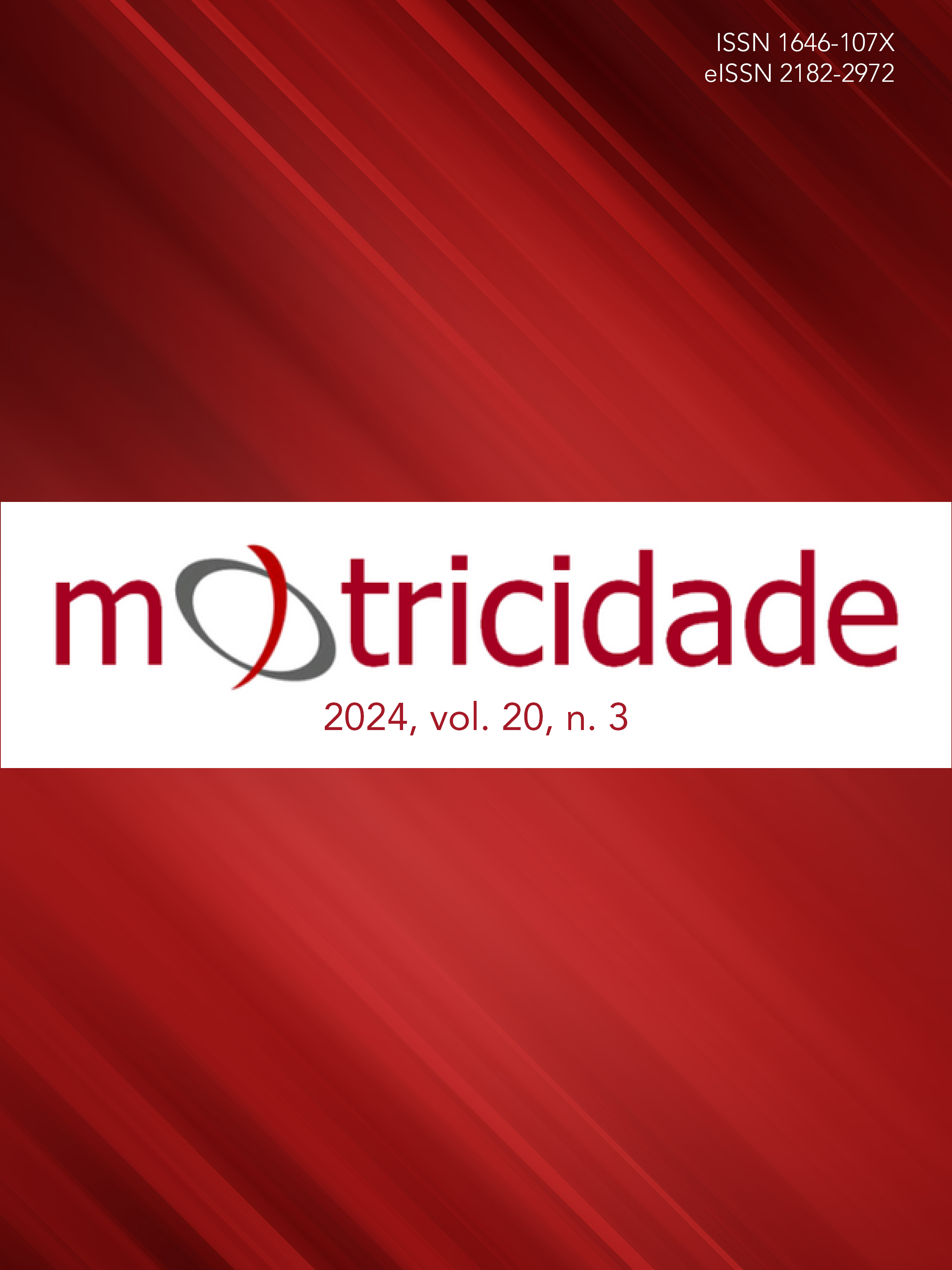Validation of the Aquanex system to assess in-water forces during aquatic exercise
DOI:
https://doi.org/10.6063/motricidade.33520Keywords:
Swimming, pressure sensors, resultant force, methods, device, kineticsAbstract
The aim of this study was to perform a validation of the Aquanex system to assess in-water forces during aquatic exercise. One sensor (Type A) that composes the differential pressure system (Aquanex v.4.1, STR, USA) was placed inside a wind tunnel (Axial Propellor Fan, England), this last being considered as the gold standard technique for measurement. A frequency inverter was used to control a range of twenty-two frequencies. The mean force (FMEAN, N) acting on the sensor and in the wind tunnel model was measured. The validation criteria were defined as follows: (i) p>0.05 in a paired t-test; (ii) R2≥0.49 in a simple linear regression model; and (iii) at least 80 % of the plots within the limits of agreement in the Bland-Altman plots. The results showed no differences between both methods (p=0.884). A significant relationship with a high effect (R2=0.573, p<0.001) was found, as well as a small bias (0.002 N) between the two methods. Thus, the Aquanex system seems to be valid for assessing the in-water forces as it meets all the validation criteria.
Downloads
Published
Issue
Section
License
The authors of submitted manuscripts must transfer the full copyright to Journal Motricidade / Sílabas Didáticas Editions. Granting copyright permission allows the publication and dissemination of the article in printed or electronic formats, and copyrights start at the moment the manuscript is accepted for publication. It also allows Journal Motricidade to use and commercialise the article in terms of licensing, lending or selling its content to indexation/abstracts databases and other entities.
According to the terms of the Creative Commons licence, authors may reproduce a reasonable number of copies for personal or professional purposes, but without any economic gain. SHERPA/RoMEO allows authors to post a final digital copy (post-printing version) of the article on their websites or on their institutions' scientific repository.


